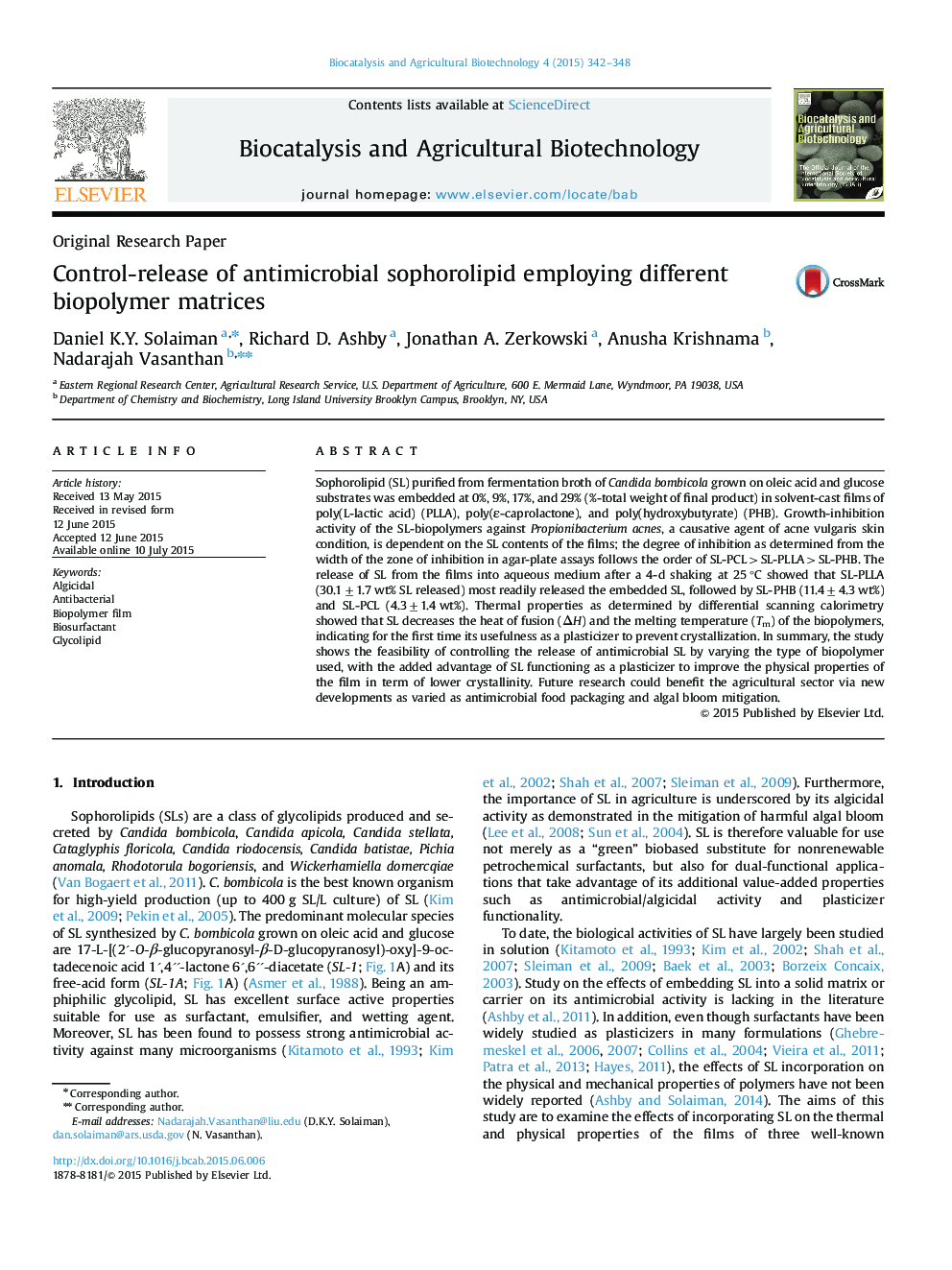| Article ID | Journal | Published Year | Pages | File Type |
|---|---|---|---|---|
| 2075460 | Biocatalysis and Agricultural Biotechnology | 2015 | 7 Pages |
Sophorolipid (SL) purified from fermentation broth of Candida bombicola grown on oleic acid and glucose substrates was embedded at 0%, 9%, 17%, and 29% (%-total weight of final product) in solvent-cast films of poly(L-lactic acid) (PLLA), poly(ε-caprolactone), and poly(hydroxybutyrate) (PHB). Growth-inhibition activity of the SL-biopolymers against Propionibacterium acnes, a causative agent of acne vulgaris skin condition, is dependent on the SL contents of the films; the degree of inhibition as determined from the width of the zone of inhibition in agar-plate assays follows the order of SL-PCL>SL-PLLA>SL-PHB. The release of SL from the films into aqueous medium after a 4-d shaking at 25 °C showed that SL-PLLA (30.1±1.7 wt% SL released) most readily released the embedded SL, followed by SL-PHB (11.4±4.3 wt%) and SL-PCL (4.3±1.4 wt%). Thermal properties as determined by differential scanning calorimetry showed that SL decreases the heat of fusion (ΔH) and the melting temperature (Tm) of the biopolymers, indicating for the first time its usefulness as a plasticizer to prevent crystallization. In summary, the study shows the feasibility of controlling the release of antimicrobial SL by varying the type of biopolymer used, with the added advantage of SL functioning as a plasticizer to improve the physical properties of the film in term of lower crystallinity. Future research could benefit the agricultural sector via new developments as varied as antimicrobial food packaging and algal bloom mitigation.
Graphical abstractFigure optionsDownload full-size imageDownload as PowerPoint slide
